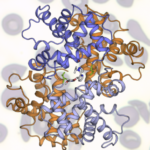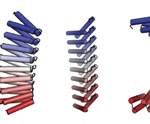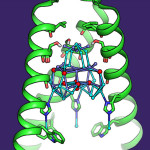The protein crystallography capabilities at the Advanced Light Source’s (ALS’s) Beamline 8.3.1 have been critical to Global Blood Therapeutics’ (GBT’s) ongoing effort to formulate a better treatment for sickle cell disease (SCD).
Exploring the Repeat-Protein Universe
Naturally occurring proteins—chains of amino acids that fold into functional, three-dimensional shapes—are believed to represent just a small fraction of the universe of all possible permutations of amino-acid sequences and folds.  How can we begin to systematically sift through those permutations to find and engineer from scratch (de novo) proteins with the characteristics desired for medical, environmental, and industrial purposes? To address this question, a team led by researchers from the Institute for Protein Design at the University of Washington have published a landmark study that used both protein crystallography (Beamlines 8.2.1 in the Berkeley Center for Structural Biology and 8.3.1) and small-angle x-ray scattering (SAXS; SIBYLS Beamline) at the ALS to validate the computationally designed structures of novel proteins with repeated motifs. The results show that the protein-folding universe is far larger than realized, opening up a wide array of new possibilities for biomolecular engineering. Read the ALS Science Highlight.
How can we begin to systematically sift through those permutations to find and engineer from scratch (de novo) proteins with the characteristics desired for medical, environmental, and industrial purposes? To address this question, a team led by researchers from the Institute for Protein Design at the University of Washington have published a landmark study that used both protein crystallography (Beamlines 8.2.1 in the Berkeley Center for Structural Biology and 8.3.1) and small-angle x-ray scattering (SAXS; SIBYLS Beamline) at the ALS to validate the computationally designed structures of novel proteins with repeated motifs. The results show that the protein-folding universe is far larger than realized, opening up a wide array of new possibilities for biomolecular engineering. Read the ALS Science Highlight.
Improving Anti-Influenza Medications
The annual flu epidemics caused by influenza viruses, especially the influenza A virus, affect about 10–20% of the world’s population each season. This highly contagious illness can trigger serious complications and lead at times to death. A team of scientists led by Bill DeGrado from UC San Francisco have been studying the M2 proton channel from the influenza A virus, which is one of nature’s smallest proton-selective channels and a drug target for this virus. Protein crystallography performed at the Advanced Light Source (ALS) Beamline 8.3.1 helped scientists understand the M2 proton-channel structure and function, and will aid the design of better anti-influenza medications. Read the ALS Science Brief.
Was this page useful?






